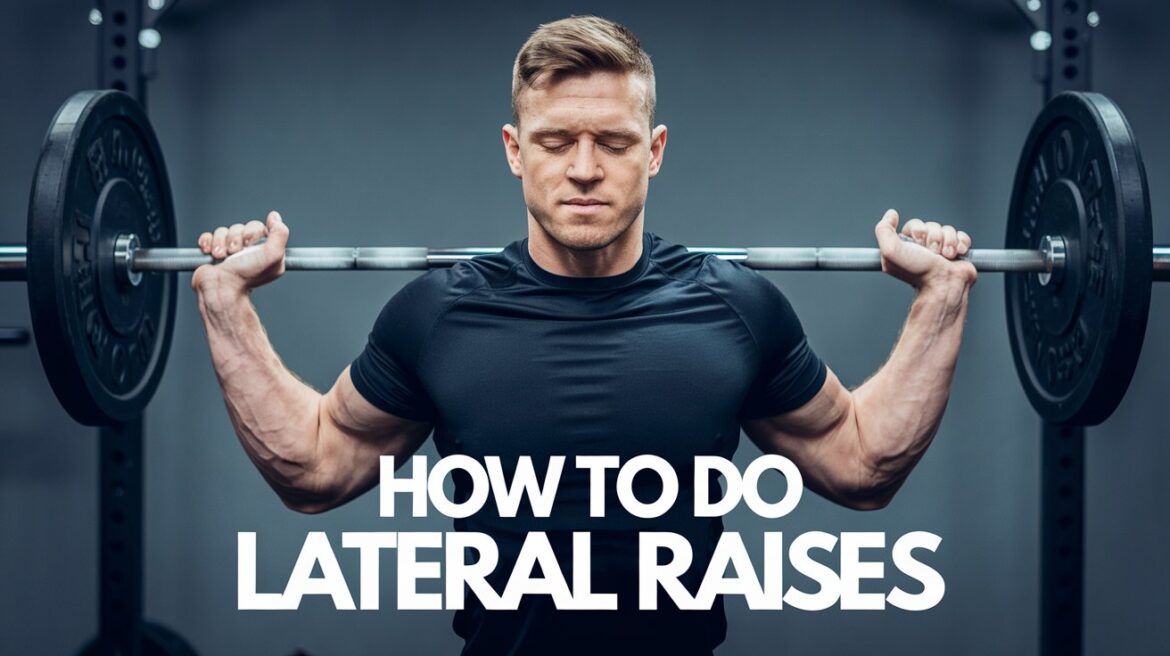Quick Answer
Lateral raises are the lifting of dumbbells up the side of the body with your hands on the dumbbells. This exercise works with the lateral head of the deltoid muscles. Start with a feet hip-width apart stance, then extend your arms and lift both dumbbells upwards until they form a “T” at shoulder height. This exercise builds shoulders that are broader and stronger and can be modified for varying fitness levels.
Intro
Lateral raises are a shoulder exercise to isolate and work the lateral head of the deltoid. The movement is to raise the arms out to shoulder height, with light dumbbells used to create resistance. Lateral raises are simple yet effective, making them suitable for all fitness levels. They’re usually included in upper-body workouts as help toward having rounded shoulder strength and improvement in posture.
Target Muscles
Lateral raises work primarily the side deltoid but also lay on the anterior and posterior heads as well to a lesser extent. That’s an equal spread of shoulder development. The movement also involves scapular stabilizers such as the trapezius and upper back as part of the stabilizing forces during the lift.
Required Equipment
You only require light dumbbells to carry out lateral raises. For beginners, there is a need for using weights between 2-5 pounds. From there, continue with the increment of the weights in order to keep challenging your muscles as you gain strength.
Benefits of Lateral Raises
Shoulder Strength and Stability:
The strength of the deltoids will increase the stability of the shoulder which will be vital in preventing future injuries as well as keeping the shoulder in perfect function.
Improves Posture:
Lateral raises also work the muscles that pull the shoulders back, so they help individuals who sit all day develop better posture.
Aesthetic Benefits:
Lateral raises can contribute to having broader shoulders for a more balanced and symmetrical upper body appearance.
How to Do Lateral Raises End
To successfully finish the lateral raises, you have to target the right muscles while avoiding the chances of injury. Here is how you do it.
Correct Form and Technique
Stand with feet spread apart at hip-width levels. Start with a dumbbell in each hand and palms facing towards each other. Slowly raise your arms out to your sides with arms straight, but a slight bent at elbows. Pull your arms until they reach shoulder levels and you have a “T” type shape for your body. Briefly pause at the top then lower back down slowly to the starting position. Repeat for 12-15 reps, keeping control throughout the movement.
Breathing Technique
Breathe in as you lift the dumbbells up and breathe out as you bring them back down. That controls proper rhythm and movement through the movement.
Common Mistakes to Avoid
Even though lateral raises are pretty easy, there are common mistakes that can cut into effectiveness or put more at risk for injury.
Too Much Weight on Use:
When you’re very heavy, this might play with your form or just overload the joints in the shoulders.
Engaging Trapezius:
Many will unconsciously shrug the shoulders when the shift occurs from the delts into the traps. Just keep the shoulders down and relaxed.
The swinging motion of the weights decreases the amount of isolation brought by the deltoid muscles. Therefore, be sure to use slow movements for you to get enough out of this exercise.
Variations of Lateral Raise
The following lateral raises can be used to vary your workouts and to target different muscle fibers.
Arm Bent Lateral Raises
This variation decreases the tug on your shoulders as much as the length of the arm lever decreases, thus you get the opportunity to lift a little heavier dumbbells. Perform the exercise in the same way but with bent elbows at 90 degrees.
Kettlebell Lateral Raises
Kettlebells that use an uneven distribution of weight represent an added challenge. The variation increases stability for the shoulder and strengthens grip.
Cable Lateral Raises
Because cables apply tension across the entire range of motion, this exercise recruits the muscle more effectively than when using dumbbells.
Safety Precautions of Lateral Raises
To be even safer as you do your lateral raises, here is some advice
Light Weights:
Should you be a beginner in doing lateral raises, then light weights might come in handy. Use them, learn your form, then go heavier loads.
Do not lift heavy weights to height over the shoulders:
Generally, lifting the weights too high will add a lot of stress to the joints of the shoulders. This increases the risks of getting injured.
Warm up your shoulders:
Get your shoulders ready to start with some dynamic stretch or light exercising to get your muscles prepared for more exhausting exercises.
Questions Frequently Asked
Which muscles will be exercised with the exercise that you’ve done?
Lateral raises require use of the lateral head of the deltoid, which gives one the illusion of wider shoulders. Since they also stabilize with trapezius to target the upper back, they also work to develop it.
How many times a week should I do my lateral raises?
Do lateral raises 2-3 times a week in your upper body workout, doing 12-15 reps in a set.
Do I do lateral raises with heavy or light weights?
Begin with the light weights, concerned with form, and then increase your weight as you get stronger, challenging your muscles more.
Are lateral raises a good exercise for beginners?
Start with very light weight, pay attention to proper form, and avoid injury at all costs.
Do lateral raises damage your shoulders?
Duly performed with sufficient weight and proper form, side raises are harmless and help in the strengthening of shoulder muscles and stability.

